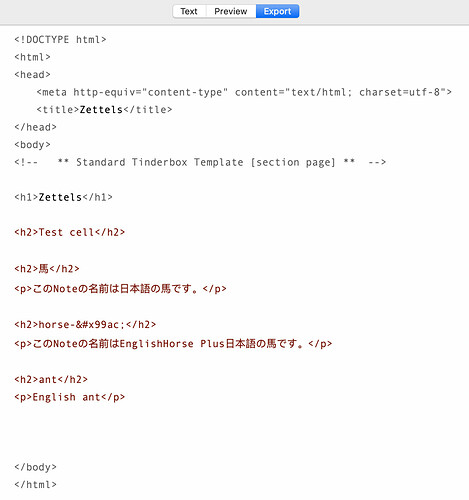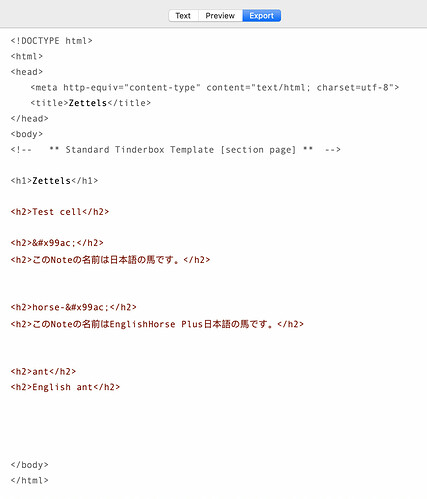Why Japanese character become blur ?
I would be very grateful if I could have your wisdom.
I am investigating the cause of garbled characters in md format.
I added one note to Dr.Mark Anderson’s zettelcode-demo.tbx file.
[[A Tinderbox solution to organising a Zettelkasten? - #44 by Steve_Scott]]
I have added one note.
Exporting as html displays Japanese without problems, but
However, when I export the file as an md file with “HTMLExportExtension”, the
However, when I export the file as a md file to “HTMLExportExtension”, only the “horse-horse” file is not created in the Testcell Folder.
Only the file of “horse-horse” is not created in Testcell Folder.
If you exclude Japanese from the title name “horse-horse” and change it to “horse”.
horse.md will be created.
Here is the name of the note
(I’ve enclosed it in brackets for convenience of posting)
The string [ horse-馬 ] is checked in the Export Pane.
The string is [ horse-馬 ].
Because of the [ &# ] & [ ; ] between the two, the string is not displayed in the markdown file.
I understand that this is why the string is messed up when I change it to a markdown file.
It also seems that specifying utf-8 in the Built-in Templates does not work.
Question 01: How do I get the “Japanese” display to work without the [ &# ] & [ ; ] ?
Q02: What happens when I use the HTMLExportExtension to export a file?
What should I be aware of when exporting files with HTMLExportExtension?
This question will be sent as a separate thread.
Thx and regards, WAKAMATSU
P.S
X99AC 馬 is Unicode character number 39340, KanjiLiberal, Uma.

